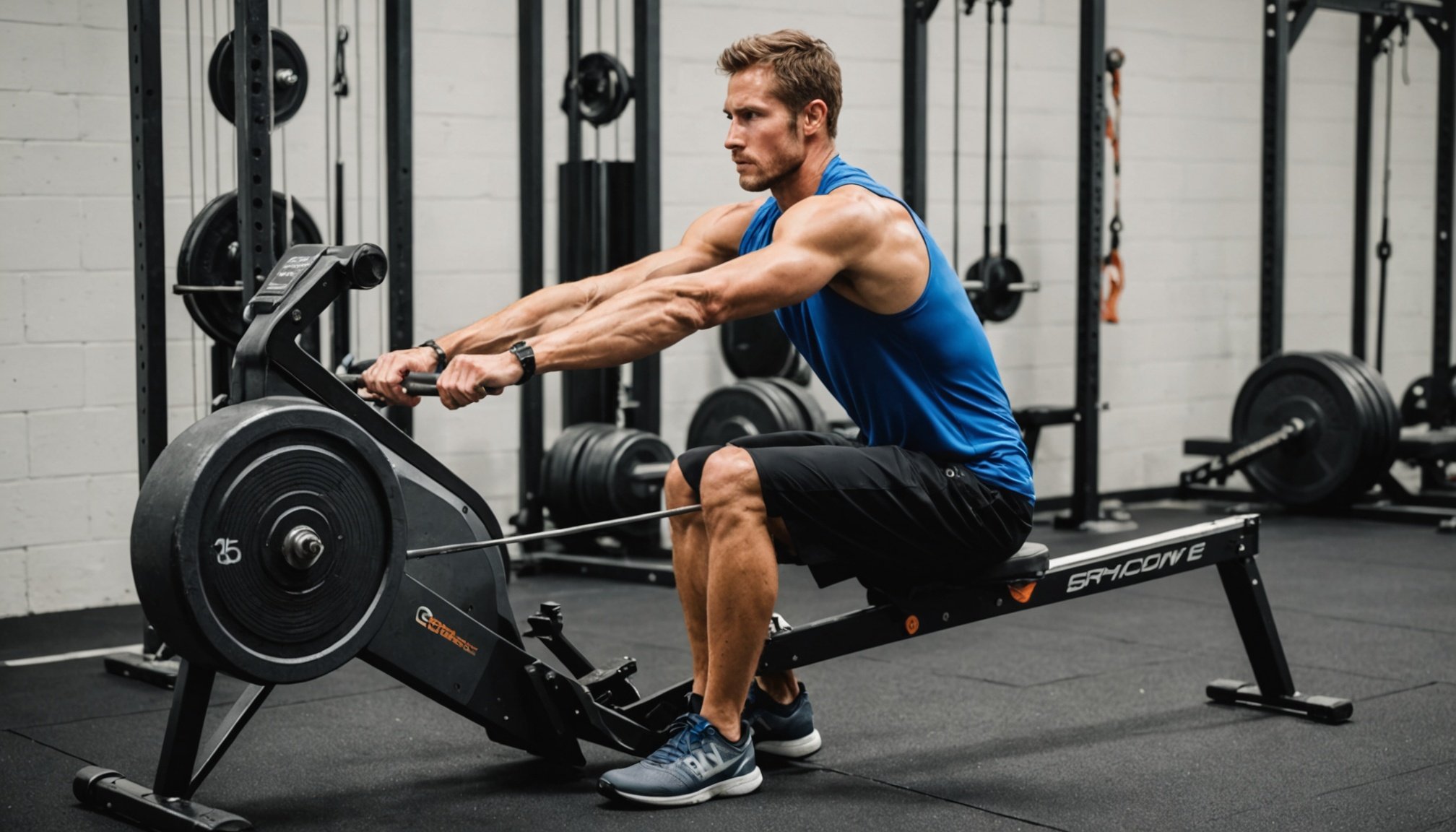Importance of Core Strength for Rowers
A strong core is essential for enhancing rowing performance. Core muscles are crucial for maintaining balance and stability during every stroke. When rowing, athletes rely on their core to transfer power from the lower to the upper body, ensuring smooth and efficient movement. This transfer allows rowers to maximise power output without expending extra energy.
A well-developed core provides stability to the pelvis and spine, crucial for sustaining the repetitive motion of rowing. Core stability reduces the risk of injury by providing a solid foundation from which other muscles can operate effectively. Improved core strength helps in maintaining the correct posture throughout the rowing stroke, further enhancing performance and reducing strain on other muscle groups.
In the same genre : Boosting cardiovascular endurance: innovative cross-training techniques for competitive rowers
Additionally, core strength is vital for injury prevention. Rowers with strong core muscles experience fewer lower back injuries, a common issue in the sport. By fortifying the body’s most central musculature, rowers can enjoy improved performance, better balance, and reduced injury risk. Therefore, integrating core exercises into training routines should be a priority for anyone looking to boost their rowing capabilities.
Essential Core Exercises for Rowers
Building a powerful core is crucial for any rower. Core exercises play an essential role in rowing workouts, improving both strength training and performance on the water.
Also read : What are the dangers of overtraining and how can you prevent it?
Plank Variations
Plank variations are fundamental. Standard plank strengthens the entire core, including the abdomen and back. Side plank targets the oblique muscles, essential for stabilizing during rowing. Plank with arm/leg raises introduces an element of balance, enhancing core stability.
Russian Twists
These twists aid in developing rotational strength, vital in rowing. Maintaining proper form ensures effectiveness—keep your back straight and twist from the torso. Adjust difficulty by using a weighted ball.
Bicycle Crunches
Focus on correct execution by lying flat and lifting your shoulders off the ground. Avoid common mistakes like tugging on the neck. This exercise enhances overall rowing performance by targeting the rectus abdominis and obliques.
Dead Bug Exercise
This exercise boosts coordination and stability. Lie on your back, extend your arms and legs, and then lower alternatively while maintaining tension. Increase difficulty by adding weights or holding a position longer.
Medicine Ball Slams
For explosive power, medicine ball slams are excellent. Using this technique mimics rowing dynamics, pushing explosive strength. Ensure effective slamming by engaging the core fully.
Training Tips for Core Strengthening
Developing a strong core is essential for optimal performance enhancement in various physical activities. To effectively incorporate core workouts into your routine, consider the following training tips:
Start by determining the frequency and duration of your workouts. Aim for core workouts at least 2 to 3 times per week. Sessions of 15 to 20 minutes often suffice to engage your core effectively, maintaining a balance with other activities.
Consider combining core exercises with rowing sessions to maximize efficiency. Integrating these workouts not only saves time but also enhances your rowing technique by improving stability and power.
Rest and recovery play a critical role in core strengthening. Allow your core muscles sufficient time to recuperate before the next session to prevent overtraining. Adequate rest supports muscle growth and prevents injuries.
When creating your routine, mix dynamic exercises such as planks and Russian twists with traditional abdominal workouts like sit-ups. This diversity targets different muscle groups, ensuring comprehensive core development.
Remember: Consistency is key. Regular, well-paced core workouts significantly contribute to your overall fitness and performance. By following these guidelines, you’ll be on your way to a robust core foundation, essential for any athletic endeavour.
Common Mistakes in Core Training
Many individuals make common mistakes in core training, affecting both efficiency and safety. One frequent error is maintaining poor form, which can lead to injuries. Ensuring correct form is crucial to protect the spine and engage the right muscles. Always check alignment: the body should remain straight and stable during exercises.
Another factor is misunderstanding body alignment in core exercises. Correct alignment ensures the workout targets the intended muscles, enhancing the efficiency of each movement. Keep your core engaged by pulling your belly button towards your spine and consistently check positioning throughout each exercise.
Misconceptions about core training, especially for rowers, can hinder progress. A common myth is that focusing solely on the abs is sufficient. For effective training, include exercises that cover the entire core, such as obliques and lower back. This comprehensive approach aids in better performance and reduces injury risk during rowing.
Remember, to correct these exercise mistakes, regularly review your form in front of a mirror or use a video to capture your movements. This allows the identification and adjustment of any errors, ensuring a safer and more productive training session.
Additional Resources and Further Reading
To enhance your rowing knowledge and skills, there are numerous training resources and rowing guides available. For those seeking visual learning aids, video demonstrations offer clear guidance on exercises. These can be invaluable for both beginners and seasoned rowers who wish to refine their techniques.
Suggested Reading Materials
Experts often recommend books that provide an in-depth understanding of rowing’s technical aspects and its rich history. These texts can serve as comprehensive guides for those enthusiastic about mastering the sport or simply looking to broaden their knowledge base.
Online Communities
Joining online communities dedicated to rowing can be particularly beneficial. These platforms enable you to connect with fellow enthusiasts, exchange tips, and share best practices. Engaging with such communities often provides expert advice from seasoned rowers, offering practical solutions to common challenges faced in the sport.
These resources, whether videos, books, or online groups, are excellent for ensuring your rowing journey is not only educational but also enjoyable and rewarding. Embrace them and become part of a supportive network that fosters growth and camaraderie.











